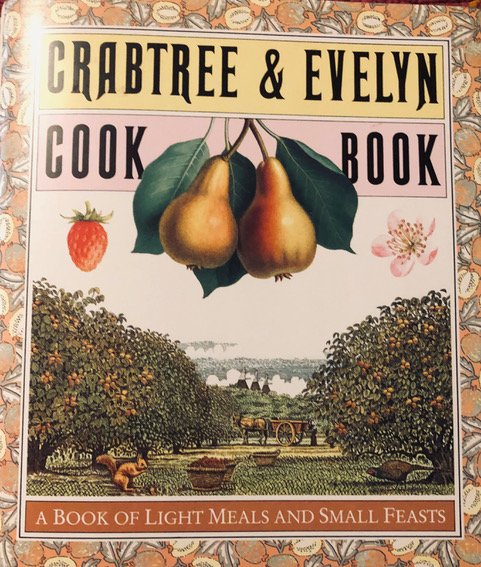Memories of Quince, Shared and Preserved
In 2014, I flew with my longtime friend Chomsri to Istanbul where we stayed at the elegant Pera Palace Hotel—built in 1892 for passengers arriving from Europe aboard the Orient Express Railway. The historic hotel’s daily breakfast buffet was a spread fit for royalty, but what I remember most was the delicious contents of the small jars of marmalade at our table each morning—Quince (Ayva) Marmalade, produced by Soteks, Ltd, Türkiye. I was so taken with the delightful flavor of the fruit that I brought home a small jar of the quince marmalade with a yellow, pear-shaped fruit and pinkish coral-colored blossoms on the label. That food memory launched me on the trail of its Turkish origins.
Quince marmalade with breakfast at the Pera Palace Hotel in Istanbul.
Once back home in Missouri, I perused the Encyclopedia of Cooking and learned that quince trees, still common in rural America’s backyards in the late 19th century, are rarely found in contemporary backyard gardens. I also learned that this hard, dry-textured fruit of a tree belonging to the apple family is native to temperate regions of Asia (Turkey being the largest producer). Rich in pectin, the fruit ripens in September when quinces become golden yellow and resemble apples or pears.
A few months later, I ordered a dwarf Orange Quince tree from Stark Bro’s Nursery in Louisiana, MO. Established soon after James Hart Stark arrived from Kentucky in 1816 with apple scions from his family orchard, Stark Bro’s has the largest online, direct-to-customer nursery in the country. Anticipating its arrival, I pored through old cookbooks in search of quince recipes. In The Shaker Cookbook—from Pleasant Hill near Lexington, KY—I found a recipe for Amelia’s Quince Pudding. A beautifully illustrated copy of “Crabtree & Evelyn Cookbook” suggests a light menu of Tomato and Celery Soup, Glazed Pork Loin with Garlic Potatoes, and Brussels Sprouts in Brown Butter, followed by Apple-Quince Bread Pudding for dessert.
Having traced the quince fruit back to its Asian origins, I checked Claudia Rodin’s The New Book of Middle Eastern Food and found numerous contemporary recipes for this ancient fruit—Quince(s) with fish; poached in syrup; preserves; with roast duck; stuffed; with tagine of lamb; and in couscous with tomatoes and fish. And I recalled that my Iraqi friend Shakir Hamoodi once told me that he has childhood memories of his mother making quince jam in the family’s kitchen in Baghdad.
While tracing the history of quince in America, I pulled out James Beard’s 1972 classic tome, American Cookery and was delighted to read his take on this largely forgotten fruit—
Few people know the delicacy and flavor of cooked quince, and they are brilliant in bouquet both cooked and raw. When peeled, cut into sections and baked, they make a nice change from other fruit dishes. Cool the baked quince and serve with heavy cream or sour cream.
Kit and I are now putting down roots in the Sierra Foothills of Northern California—half a world away from my first taste of quince marmalade in Istanbul. Though we are surrounded by tall Douglas firs and Ponderosa pines, I’ve learned that delicious pears, plums, figs, and even quince grow in local backyard gardens. Which has led me to wonder, when did quince arrive in California?
In his October 2009 article, “There’s a New Taste for Quince,” L.A. Times writer David Karp wrote “Spanish padres planted a few quince trees in California missions, but cultivation took off only with the arrival of American nurserymen and farmers in the mid 19th century. In 1914, the great plant breeder Luther Burbank observed “the soil and climate of California are peculiarly hospitable to this fruit because of its long, warm, dry growing season.” At the time there were about 900 acres of quince grown here, and that was just a small fraction of the nation’s plantings.
Karp went on to note that “the long-neglected quince fruit was making a comeback in high-end restaurants and cookbooks.” He described quince as “both homely and voluptuous, like a large knobby, fuzzy pear.” It is “pretty much inedible unless transformed by peeling, coring, and cooking…but has an intense, alluring aroma—reminiscent of pineapple, guava, Bartlett pear and vanilla—and when cooked, its flesh softens and turns a gorgeous translucent pink.”
While on an afternoon walk with Kit last week, I stopped to chat with Mindy—a neighbor on our road who has three mature fig trees along the edge of her driveway and pear trees inside her fenced front yard. A month ago, she put a box of Bartlett pears and small Asian pears out by the road along with bags and a sign, “Free.” By twilight all the pears had been bagged and shared up and down the road. Over the following days, we collectively baked up and shared Mindy’s abundant pear harvest in cakes, pies, chutneys, and breads with each other.
This time, she offered to share a box of quince from a local friend’s ancient quince tree that, while not pretty, is a prodigious producer. After having peeled and preserved all the quince she cared to tackle, she delivered the rest to me the following day. As my grateful thanks, I am once again perusing cookbooks for quince recipes and will soon be cooking marmalade, chutney, and apple quince bread pudding to share with our new neighbors over the Thanksgiving and Christmas holidays.
What’s not to love about recipes that evoke memories of backyard orchards across the miles and centuries?In this season of giving thanks, it is the perfect time to visit The Common Ingredient — a food-sharing website with a mission that is all about sharing food and supporting community.




